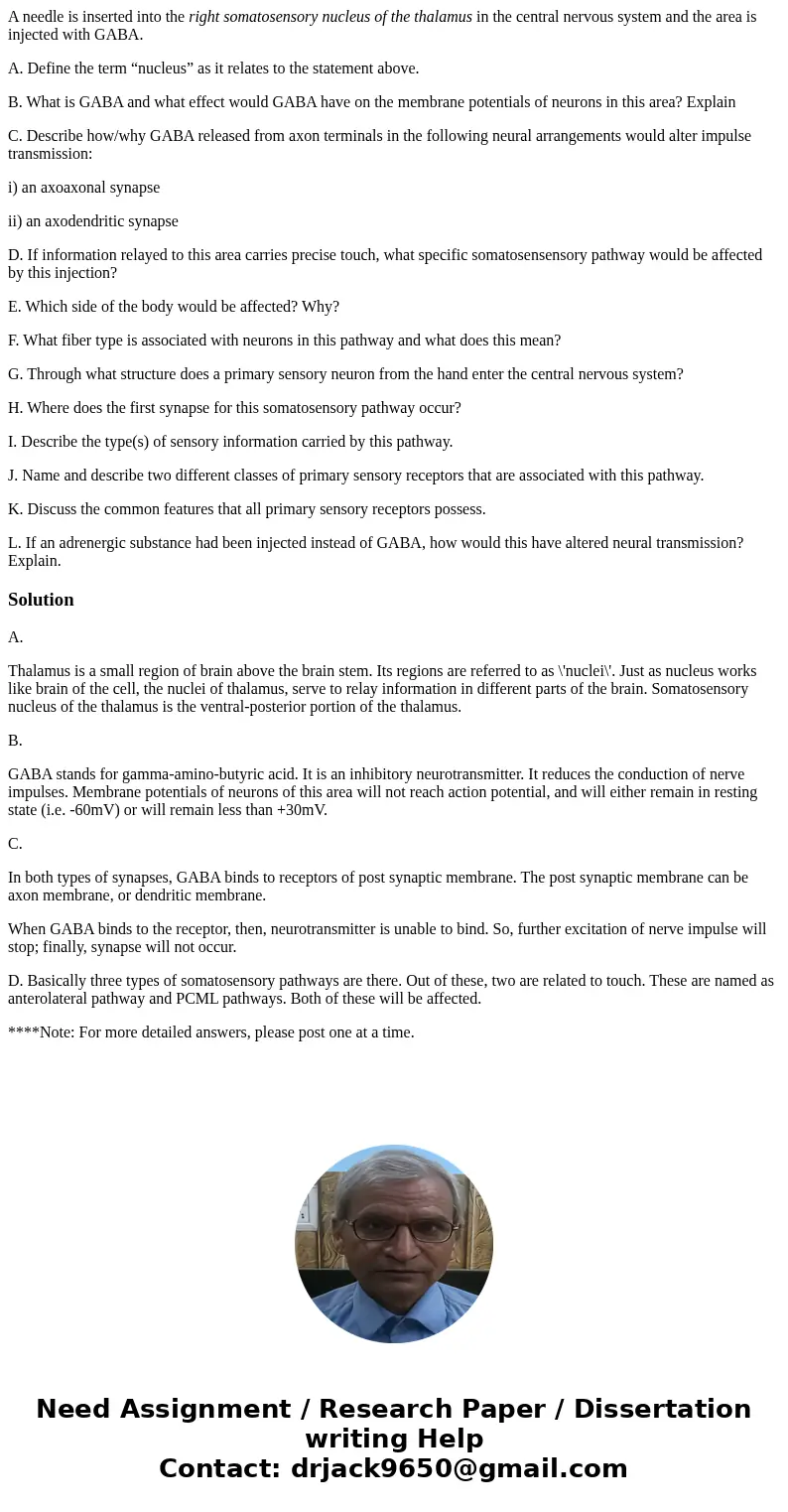A needle is inserted into the right somatosensory nucleus of
A needle is inserted into the right somatosensory nucleus of the thalamus in the central nervous system and the area is injected with GABA.
A. Define the term “nucleus” as it relates to the statement above.
B. What is GABA and what effect would GABA have on the membrane potentials of neurons in this area? Explain
C. Describe how/why GABA released from axon terminals in the following neural arrangements would alter impulse transmission:
i) an axoaxonal synapse
ii) an axodendritic synapse
D. If information relayed to this area carries precise touch, what specific somatosensensory pathway would be affected by this injection?
E. Which side of the body would be affected? Why?
F. What fiber type is associated with neurons in this pathway and what does this mean?
G. Through what structure does a primary sensory neuron from the hand enter the central nervous system?
H. Where does the first synapse for this somatosensory pathway occur?
I. Describe the type(s) of sensory information carried by this pathway.
J. Name and describe two different classes of primary sensory receptors that are associated with this pathway.
K. Discuss the common features that all primary sensory receptors possess.
L. If an adrenergic substance had been injected instead of GABA, how would this have altered neural transmission? Explain.
Solution
A.
Thalamus is a small region of brain above the brain stem. Its regions are referred to as \'nuclei\'. Just as nucleus works like brain of the cell, the nuclei of thalamus, serve to relay information in different parts of the brain. Somatosensory nucleus of the thalamus is the ventral-posterior portion of the thalamus.
B.
GABA stands for gamma-amino-butyric acid. It is an inhibitory neurotransmitter. It reduces the conduction of nerve impulses. Membrane potentials of neurons of this area will not reach action potential, and will either remain in resting state (i.e. -60mV) or will remain less than +30mV.
C.
In both types of synapses, GABA binds to receptors of post synaptic membrane. The post synaptic membrane can be axon membrane, or dendritic membrane.
When GABA binds to the receptor, then, neurotransmitter is unable to bind. So, further excitation of nerve impulse will stop; finally, synapse will not occur.
D. Basically three types of somatosensory pathways are there. Out of these, two are related to touch. These are named as anterolateral pathway and PCML pathways. Both of these will be affected.
****Note: For more detailed answers, please post one at a time.

 Homework Sourse
Homework Sourse